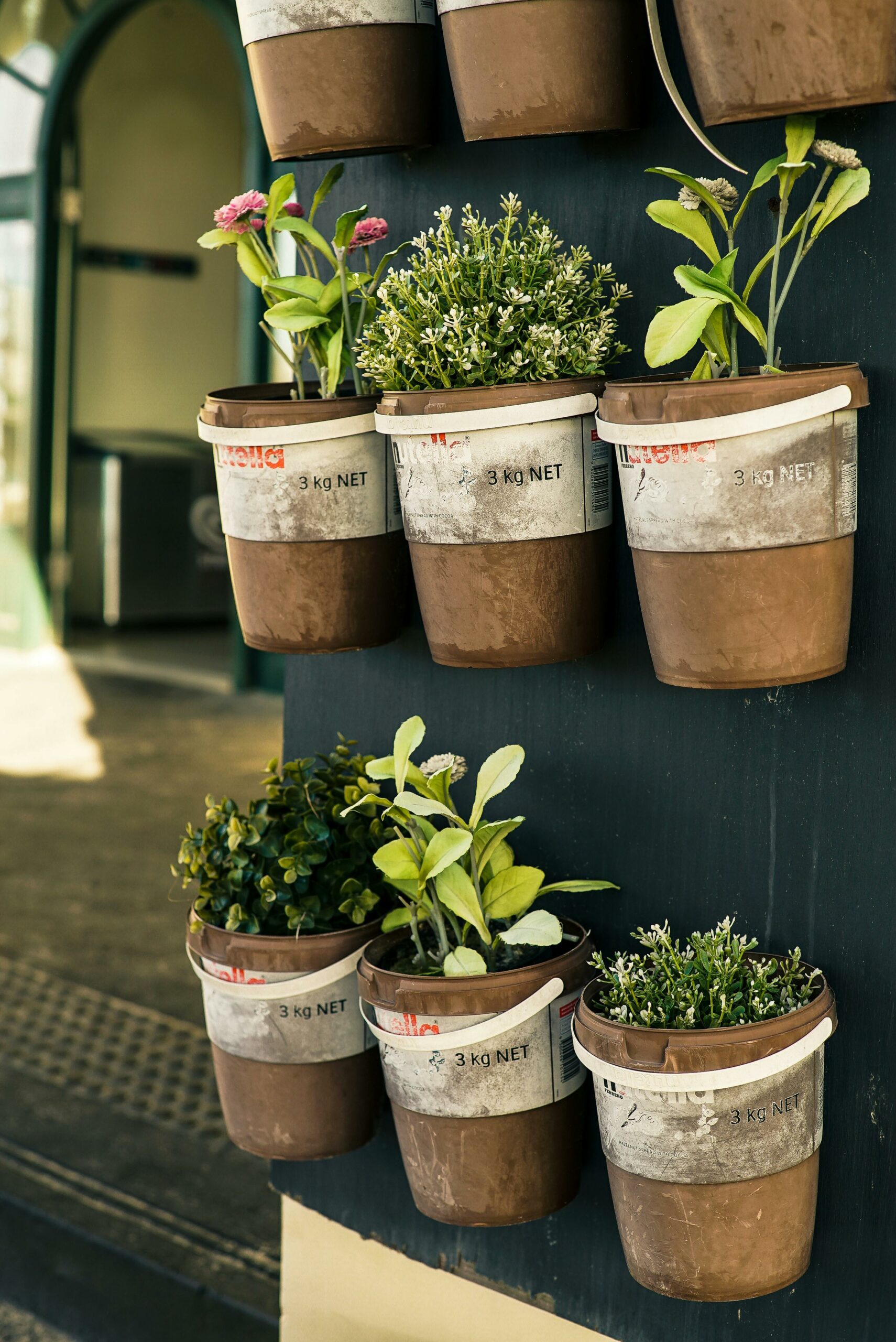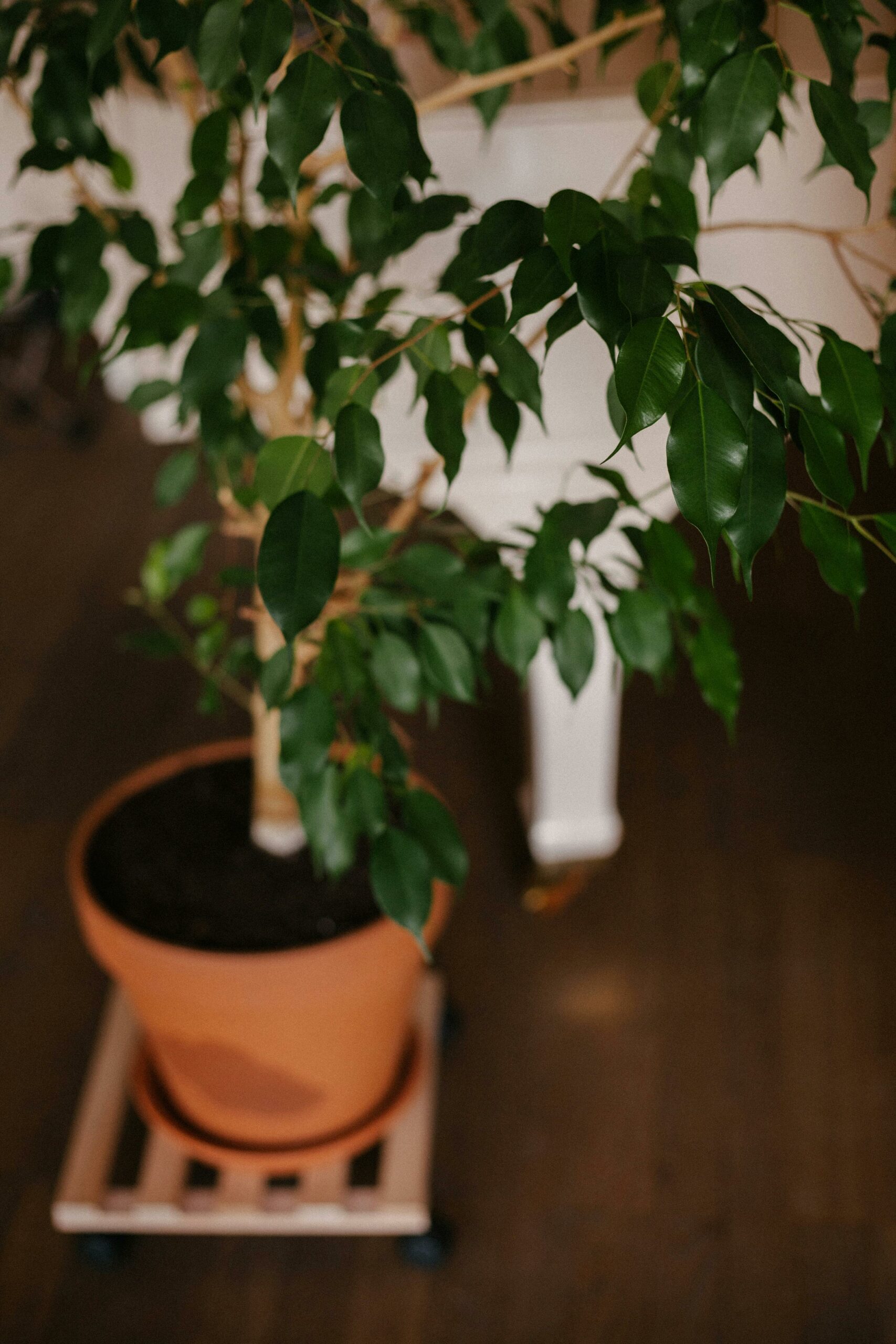Container gardening refers to the gardening practice of cultivating plants in pots, tubs, or other containers instead of directly in the ground or in raised beds. Container gardening allows for food, flower, and herb production in locations where traditional gardens are not possible or accessible, including patios, balconies, decks, and sites with poor soil quality. They are a great option for renters, individuals with limited mobility, gardeners seeking to extend the growing season, and beginner gardeners looking to start their gardening practice gradually.
Here are our top tips for having a successful growing season in containers:
Assess Your Space:
Before planting, observe your space at different times of the day, noting how the sunlight moves across the area. Ideally, container gardens should receive at least six to eight hours of direct sunlight daily for most vegetables, herbs, and flowering plants. However, if your space is shaded or receives only partial sunlight, there are still many plants that can thrive in these conditions, such as leafy greens and certain types of flowers like impatients or begonias.
Additionally, consider the quality of the sunlight in your space. Is it filtered through trees or buildings, or is it unobstructed? Plants that require full sun may struggle in areas with dappled or indirect light. Check your seed packets or seedling tags to confirm the sunlight conditions your varieties need.
Wind exposure is another important factor to consider on the Front Range, especially for balcony or rooftop gardens where plants may be exposed to strong winds. Wind can dry out soil quickly and cause plants to become stressed or damaged. Choose sturdy containers and consider installing windbreaks or using trellises to protect from high winds.
Temperature fluctuations can also impact plant growth and health, particularly in metro Denver where we can see wild temperature swings within a day. Some plants are more sensitive to temperature changes than others, so it’s essential to choose plants that are well-suited to your local climate and microclimate.

Varieties we recommend:
- Tomatoes: Look for determinate tomato varieties like ‘Celebrity’, ‘Early Girl’, or ‘Patio Princess’. These varieties are known for their ability to produce early, compact fruit even in fluctuating temperatures.
- Herbs: Herbs like rosemary, thyme, sage, and oregano are resilient and can tolerate a wide range of temperatures. They’re also versatile in the kitchen and add flavor to your dishes year-round.
- Lettuce and Leafy Greens: Varieties such as ‘Buttercrunch’, ‘Red Leaf’, and ‘Romaine’ lettuce, as well as spinach, kale, and Swiss chard, are cold-hardy and can withstand temperature fluctuations in Denver’s climate. Leafy greens can all be replanted in late summer for a fall harvest.
- Peppers: Opt for compact pepper varieties like ‘Jalapeno’, ‘Sweet Banana’, or ‘Mini Bell’ peppers, which are well-suited for containers and can handle temperature changes better than larger varieties.
- Radishes: Radishes are quick-growing and can tolerate cooler temperatures, making them ideal for early spring and late fall planting in Denver. Varieties like ‘Cherry Belle’ or ‘French Breakfast’ are popular choices for container gardening.
- Zucchini and Summer Squash: Choose bush varieties of zucchini and summer squash, such as ‘Black Beauty’ or ‘Yellow Crookneck’, which take up less space and are more resilient to temperature fluctuations than sprawling varieties.
- Marigolds: Marigolds are hardy annual flowers that add a pop of color to your container garden. Varieties like ‘French Marigold’ or ‘Signet Marigold’ are heat-tolerant and can thrive in Denver’s climate.
Experiment with a variety of plants to create visual interest and maximize productivity in your container garden. Mix and match different colors, textures, heights, and growth habits to create dynamic container compositions that are as beautiful as they are productive.
Plan for seasonal changes by selecting plants that offer year-round interest or swapping out plants with the changing seasons. Consider cool-season vegetables and annual flowers for spring and fall, and heat-tolerant plants for summer. Rotate crops regularly to prevent soil depletion and pest buildup.
Set Up Your Containers for Success:
Containers offer a diverse range of options in terms of shapes, sizes, and materials, providing flexibility for customizing your garden according to your preferences and requirements. Traditional choices like ceramic and terracotta pots add a timeless appeal to any garden, although terracotta pots have a tendency to dry out soil quickly. On the other hand, lightweight plastic containers are popular for their practicality and affordability, but there is a risk of them leaking microplastics into the soil over time when exposed to sunlight, heat, and moisture.
To minimize the potential for microplastic contamination, it’s important to properly dispose of old plastic pots and regularly inspect and maintain plastic containers for signs of deterioration. Additionally, thrifty gardeners often repurpose items such as buckets and barrels to create unique and functional upcycled containers that add character to their gardens.
Proper drainage is essential for container gardening success. Choose containers with adequate drainage holes (or add them yourself!) to prevent waterlogging and root rot. Elevate containers on pot feet or use saucers to allow excess water to drain away freely, ensuring healthy root growth.
Selecting the right potting mix is crucial for container gardening success. Use a high-quality organic potting mix specifically formulated for container gardening, as garden soil may compact and inhibit drainage in containers. Look for mixes that contain a blend of organic matter, perlite, and vermiculite to promote healthy root growth and water retention.

Adding compost to a potting mix for container gardens is also quite beneficial. Compost adds valuable organic matter to the soil, which improves soil structure, increases water retention, and enhances nutrient availability for plants. It also introduces beneficial microorganisms that contribute to soil health and plant growth.
Planting Your Container Garden:
Before planting, fill containers with potting mix, leaving space at the top for watering. Add water to your mix in the pots so that the soil is well-moistened (but not soaking wet) before planting. Plant seeds or seedlings at the appropriate depth, following specific planting instructions for each plant. Water newly planted containers at the root of the plant to settle the soil and establish good root contact.
Arrange plants in containers with consideration for aesthetics and functionality. Place taller plants in the center or rear of containers, with trailing or cascading plants along the edges to soften the edges and create visual interest. Experiment with different planting schemes, such as symmetrical, asymmetrical, or layered arrangements, to find a style that suits your space.
Provide adequate spacing between plants to allow for proper airflow, sunlight penetration, and root development. Avoid overcrowding containers, as this can lead to competition for resources and increased risk of disease. Consider using companion planting techniques to maximize space and naturally repel pests, such as planting marigolds to deter aphids or basil to repel mosquitoes.
Common companion plants for containers:
- Basil and tomatoes: Basil is known to enhance the flavor of tomatoes while repelling pests like mosquitoes and flies.
- Marigolds and vegetables: Marigolds are excellent companion plants for vegetables like tomatoes, peppers, and eggplants. They help deter pests like nematodes and whiteflies while attracting beneficial insects like ladybugs and bees.
- Nasturtiums and cucumbers: Nasturtiums repel pests such as aphids and cucumber beetles, making them ideal companions for cucumbers. Their edible flowers add a pop of color and peppery flavor to salads.
- Chives and carrots: Chives help deter pests like aphids and carrot flies while improving the overall health of carrots. Planting chives around carrot containers can enhance carrot growth and flavor.
- Thyme and strawberries: Thyme acts as a natural insect repellent and helps prevent fungal diseases, making it an excellent companion for strawberries. It also adds a savory flavor to strawberries when grown together.
- Lavender and herbs: Lavender not only adds beauty to containers but also repels pests like moths, fleas, and mosquitoes. Planting lavender alongside herbs like rosemary, sage, and oregano can help deter pests and attract beneficial pollinators.
- Calendula and beans: Calendula, also known as pot marigold, attracts pollinators and beneficial insects while deterring pests like aphids and nematodes. Planting calendula near beans can improve bean yield and overall plant health.

Caring for Your Container Garden:
Proper watering is crucial for ensuring healthy container gardens. To maintain optimal soil moisture levels, it’s essential to monitor the soil regularly. You can check the soil moisture by inserting your finger into the soil; if the top inch feels dry or no soil sticks to your finger, it’s time to water. When watering, ensure thorough saturation at the root level rather than watering from above, as this minimizes the risk of fungal diseases by preventing excess moisture on the foliage. Be aware that soil in containers may need daily watering to maintain moisture levels optimum for healthy growth.
In addition to proper watering, incorporating compost into the soil is beneficial for container plants. Compost enriches the soil with essential nutrients, improves soil structure, and promotes healthy microbial activity. Throughout the growing season, periodically add a layer of fresh compost to the top of the soil. Lightly mix the compost into the top layer of soil, ensuring it is evenly distributed. This practice replenishes nutrients and organic matter, providing ongoing nourishment for your plants.
After adding compost, consider applying a layer of mulch such as straw, leaves, or other green matter. Mulch helps retain moisture in the soil, regulates soil temperature, suppresses weeds, and reduces evaporation. Together with compost, mulch creates a favorable environment for plant growth, promoting healthy root development and overall plant vigor.
Prune plants as needed to maintain shape, control size, and remove dead or diseased growth. Deadhead spent flowers regularly to encourage continued blooming and prevent seed production. Use sharp, sterilized pruners or scissors to make precise cuts and minimize damage to plants.
As the season progresses, monitor plants for signs of pests and diseases and take appropriate action to control infestations. Effective organic pest control methods include hand-picking pests, spraying with insecticidal soap, and introducing beneficial insects like ladybugs and lacewings that prey upon pest insects. Practice good sanitation by regularly removing debris and fallen leaves from containers to reduce the risk of fungal diseases and pest buildup.
Putting Your Container Garden To Bed:
At the end of the season, putting your container garden ‘to bed’ for the season is essential for maintaining soil health, protecting plants from harsh winter conditions, and preparing for successful growth in the following season. Begin by removing any annual plants that have reached the end of their growing season. Cut back the foliage and stems, and then carefully lift the plants out of their containers. Compost this material but be sure to discard any diseased or pest-infested plants in the trash to prevent the spread of problems to other areas of your garden.
If your containers contain perennial plants, assess their condition and prune as needed to remove dead or damaged growth. Wait until spring to do any major pruning since this practice can stimulate new growth that may not survive winter conditions.
After removing plants, add in a fresh layer of compost and then cover with a thick mulch bedding of straw or fallen leaves. This replenishes nutrients, improves soil structure, and helps the soil retain moisture, preparing it for future planting.
To prevent damage from freezing temperatures, consider moving containers to a sheltered location such as a garage, shed, or covered porch. If moving containers indoors is not possible, insulate them by wrapping them with burlap or bubble wrap or placing them close together to create a windbreak. Elevating containers off the ground with pot feet or bricks helps prevent freezing and thawing cycles that can damage roots.

Throughout the winter months, periodically check the moisture level of the soil in your containers. While plants are dormant, they require less water, but it’s essential to prevent the soil from completely drying out. Water sparingly during dry periods to keep the soil slightly moist but not waterlogged.
As winter comes to an end, start planning for the next growing season. Consider which plants you want to grow, assess the condition of your containers and soil, and prepare any necessary amendments or repairs. By taking proactive steps to care for your container gardens during the winter months, you set the stage for a successful and bountiful garden in the spring.



